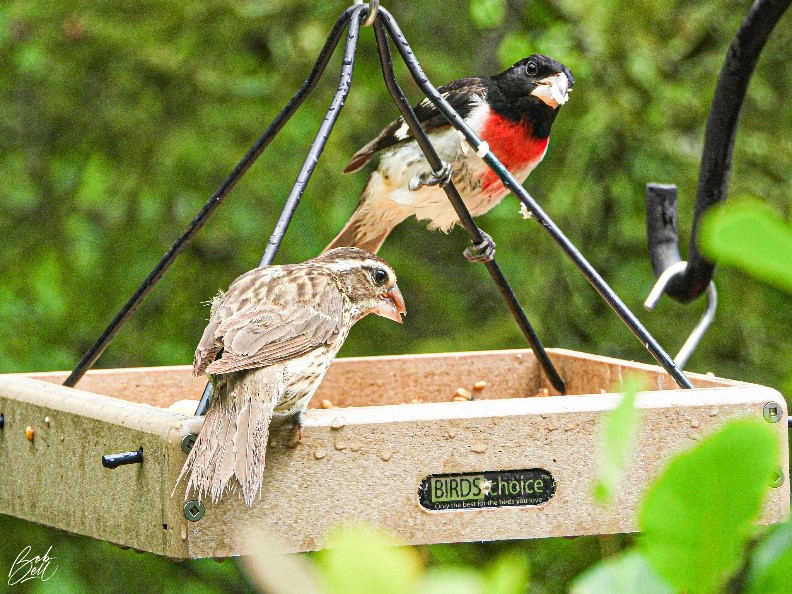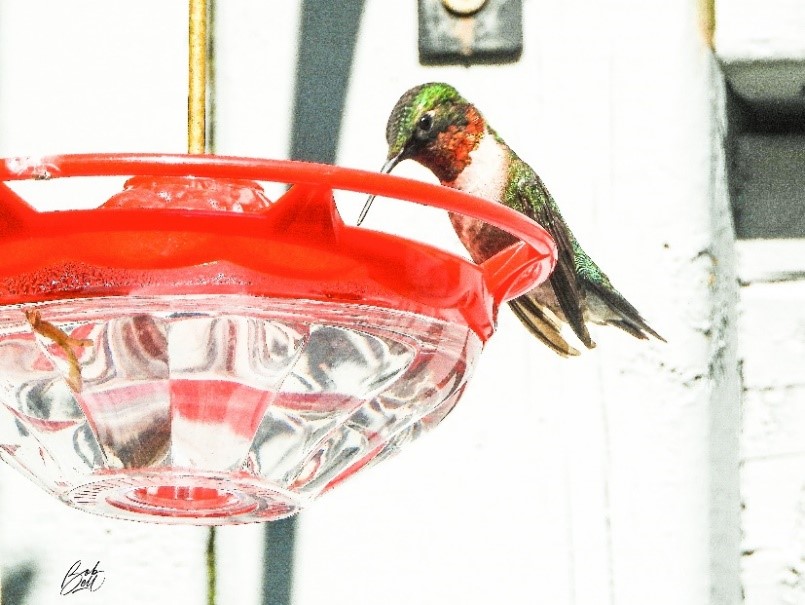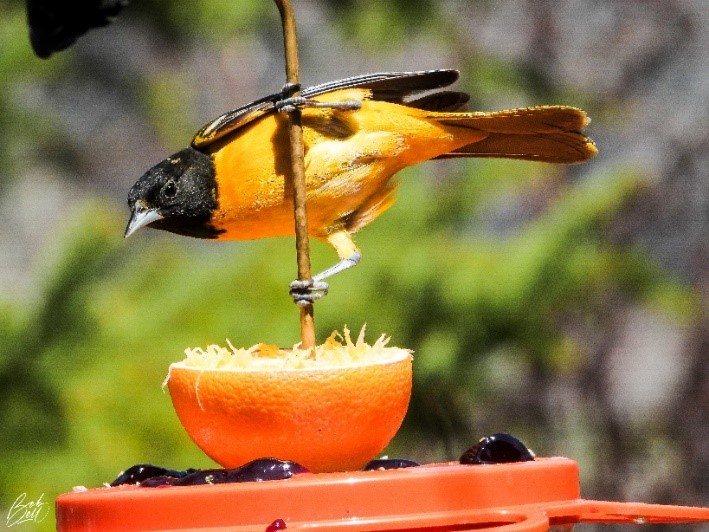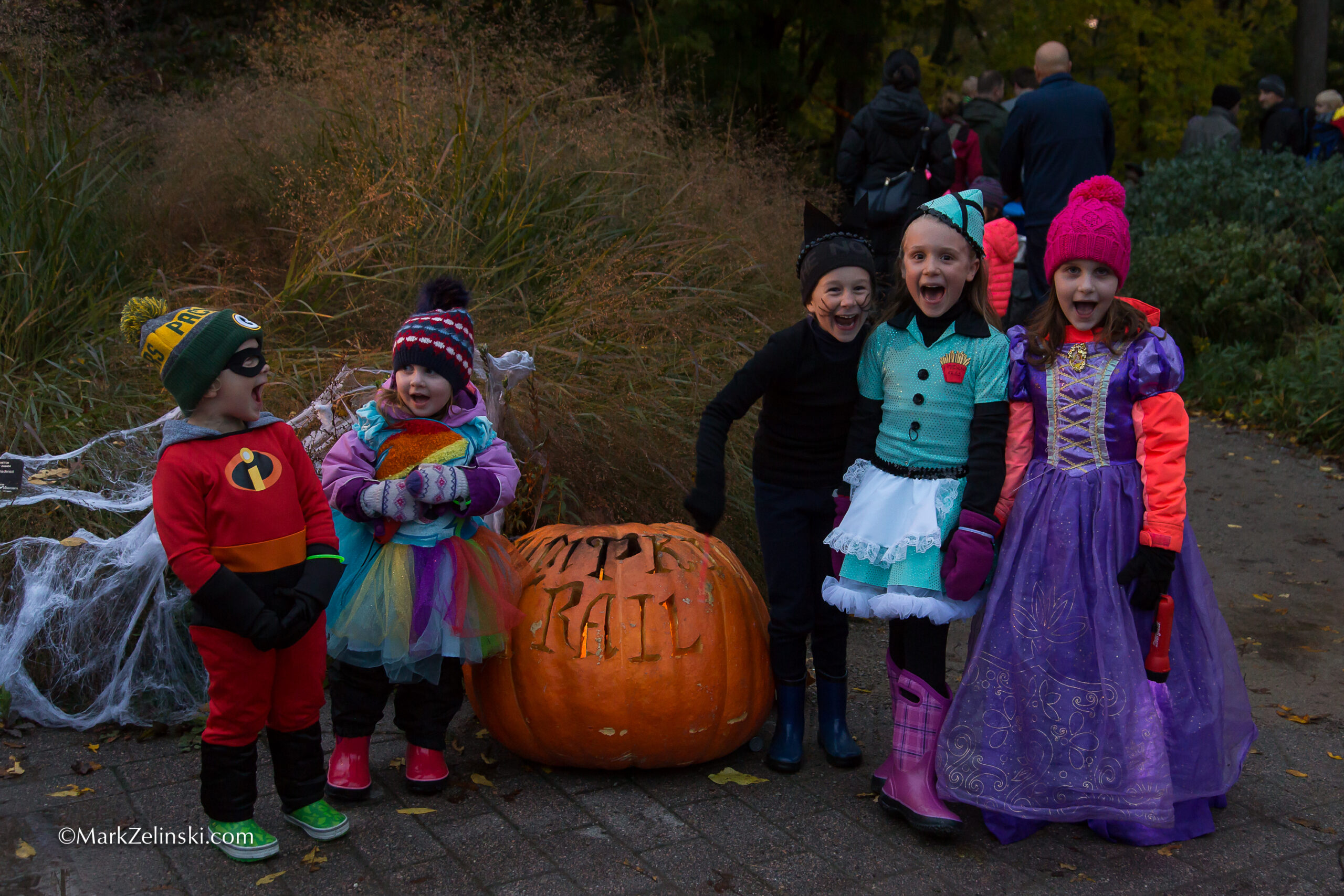By Bob Bell
Something magical is happening these days: an annual event that brings hope and joy to winter-weary folks who are listening and paying attention. Sleep with your window open. Do you hear the dawn chorus starting before 5 a.m.? One of the great wonders of the natural world is happening: spring migration is upon us. Millions of birds are returning from their wintering grounds: some to stay and brighten up our yards and parks, and some just passing through to their breeding grounds further north.
Hard to believe, but spring migration starts as early as late February or early March, when male Red-winged Blackbirds announce their return by singing their “conk-a-ree” songs. They claim territory and await the return of a prospective mate, who typically doesn’t arrive until about mid-April. Other early migrants trickle in through March and early April, but the floodgates really open from late April to mid-May. Leaves coming out means insects, and insects mean the return of the insect-eating birds.
Most songbirds migrate at night, so birders might encounter new birds every morning, different from those seen the previous day. This is especially true if there have been southerly winds. Every morning during spring migration, I feel like a kid having anxiously awaited Santa Claus, the Easter Bunny, and the Tooth Fairy, all rolled into one!
It is awe-inspiring to think that these tiny creatures, often weighing no more than a few coins, can make a return trip of hundreds to many thousands of kilometres; and some, with what is called site fidelity, are able to return to the same area — even to the same tree. In just a few short months, they claim territory, find a mate, breed, raise a family, and then head south again, some departing by mid-August.
Observing the exact date that your yard birds return in the spring is not difficult: you may see a flash of brilliant orange, a delightful “creamsicle” on wings, and there is the first Baltimore Oriole! A striking contrast of white, pink, and black? The Rose-breasted Grosbeaks are back!

The median return date for Baltimore Orioles and Rose-breasted Grosbeaks is May 3, and for Ruby-throated Hummingbirds, May 7.[1] Therefore, it is prudent to put your feeders out a few days prior, if you hope to catch the attention of an earlier migrant and have it choose your yard for his or her summer home. Rose-breasted Grosbeaks enjoy mixed seeds and seem particularly fond of sunflower seeds. A platform feeder will give you a good look at them as they snack away; they do not “grab-and-go” or “dine-and-dash” like our Black-capped Chickadees and nuthatches do. Speciality feeders for hummingbirds, with their love of nectar, can be bought at most stores that sell bird feeders and seed. Oriole feeders, which can hold a spiked orange and grape jelly, like in the photo below, might be harder to find at generalist stores but are available at Wild Birds Unlimited in Burlington. Do not buy coloured nectar for your hummingbirds; the food dye is not good for them and is not necessary, as the colour of the feeder is enough to attract them. You can easily make your own nectar at a ratio of four parts water to one part sugar.[2]

Readers might be aware of the current outbreak of avian flu, and, as a result, have concerns about having feeders out. This flu is primarily affecting domestic poultry, waterfowl, raptors, and some shorebirds. Songbirds appear to be at low risk; however, it is always good practice to regularly clean your feeders and birdbath. This writer is no expert and is in no position to give definitive advice, but recommends that interested or concerned readers refer to an article on the Cornell Lab of Ornithology’s website, which can be found at this link: Avian Influenza Outbreak 2022-2023: Should You Take Down Your Bird Feeders? | All About Birds
Unlike the sudden flash of colour indicating that a new spring migrant has returned, keeping track of fall departure dates is more challenging. It might suddenly dawn on you that you have not seen an oriole for a few days. Two nights before, there were winds from the north — they probably booked their ticket for departure that night! Fall migration is a relaxed, leisurely affair, stretching out over a couple of months or more, whereas the spring migration is frantic and furious, with a race to return, claim the best territory, and find the best mate.
Although some birds display the same plumage year-round (think Blue Jays and Black-capped Chickadees), the males of many species have bright, beautiful breeding plumages in the spring, to help attract a mate. With that job done, by fall, the males of most species have molted into duller, less flashy plumages, more akin to that of the females. Those spring colours are harbingers of good weather, a winter finally over, a renewal of nature, and of the human spirit. The bright spring colours combined with the pent-up desire to see these beautiful birds again after a long, dark winter makes spring migration the most exciting time of the year for birders. Fall migration, being more drawn out and with the birds being less colourful, does not excite birders to the same degree that spring migration does. However, the consolation prize in the fall is that there are a lot more birds to see, as there are now not only the adults who arrived in the spring, but also the juveniles of those who were successful in breeding.
Finally, a bit of shameless promotion: If you wish to learn more about various types of bird feeders, and how therapeutic watching birds can be for your physical and mental health, please consider picking up a copy of my recently-published book, Out of the Lyme Light and into the Sunlight: Birding as Therapy for the Chronically Ill. It is available in paperback (with black and white photos), hard cover (with colour photos), or electronic versions, which can be found online through Amazon, Indigo, or the publisher, Hancock House. It can be bought locally in Burlington at the gift shop at Royal Botanical Gardens, at Wild Birds Unlimited, at A Different Drummer Books, and in Hamilton at King W. Books.
May you soak up all that this beautiful, buzzing, and blooming time of year has to offer. Wishing you good health and good birding!
Sources:
[1] Curry, Robert. 2006. Birds of Hamilton and Surrounding Areas.
[2] Hummingbird Nectar Recipe: Best Ratio & Tips Url: thespruce.com (accessed April 27, 2023).



